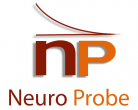The objective of this study was to examine effects of increased gut fill and diverse developing environments on pregnant gilts’ behavior and physiology. Gilts were cross-fostered at 1 d of age and transferred to either an indoor or outdoor production unit. Littermate gilts remained in their different environments during development and were moved into individual gestation crates in an indoor gestation unit. Of the 42 gilts, 19 were fed a control diet of fortified sorghum-soybean meal and 23 were fed the same diet with 25% beet pulp (high fiber). Control sows ate 2.0 kg/d and high-fiber sows ate 2.67 kg/d in a large pellet (thus resulting in approximately equal energy intake and differing total dietary intakes). Pregnant gilts had behavior and immune measures sampled at 30, 60, and 90 d of gestation. The day x diet interaction was significant (P = 0.01) for duration of standing: sows fed high-fiber diets stood less on d 30, but on d 60 and 90 they and the control sows stood for a similar duration. Sham chewing duration and frequency showed significant (P < 0.05) effects of gestation stage x diet x environment. Gilts reared outdoors and fed high fiber increased sham chewing over gestation, whereas all other treatment groups decreased this behavior over time. Outdoor-reared gilts had greater (P < 0.05) frequency and duration of drinking behavior than indoor-reared gilts. White blood cell numbers were higher (P < 0.05) for gilts fed high-fiber diets than for gilts fed the control diet. Immune (humoral and cellular systems) and reproductive measures (farrowing rate and litter size) and plasma cortisol concentrations were generally not influenced (P > 0.10) by diets and rearing environments, suggesting that in spite of significant changes in behavior and feed intake gilts’ immune systems were not suppressed or enhanced. Behavioral data alone suggested that indoor-reared gilts showed fewer behavioral adaptations to the crates than outdoor-reared gilts. However, immune measures did not indicate that any treatments resulted in physiological effects indicative of stress.
link to pdf at: http://www.journalofanimalscience.org/content/79/6/1466.long
